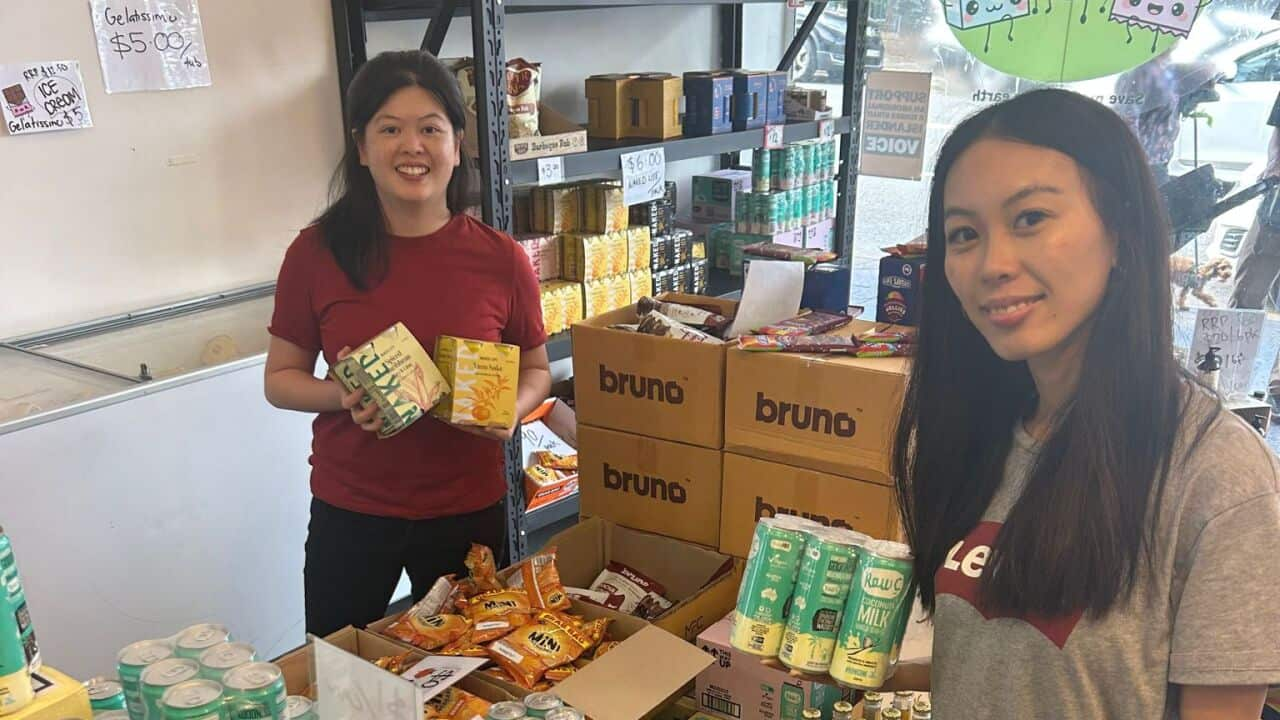Key Points
- Food fraud is a growing problem in Australia and around the world, and the issue can be dangerous.
- There are different types of food fraud, including tampering, mislabelling, counterfeit products, and dilution.
- It's believed to be a multi-billion dollar problem.
From prawns plumped up with gel to wine watered down with fruit juice, food fraud is a growing problem that costs producers in Australia billions.
Longer and more complex supply chains mean even the products at your local supermarket could be affected, despite advances in detection technology.
It could be a vintage bottle of wine diluted with grape juice, 'saffron' rice made from synthetic colourants, or 'king prawns' with added jelly-like substances.
The seven kinds of food fraud
Senaka Ranadheera, associate professor in food science at the University of Melbourne, said adulteration, or dilution, is among the most common forms of food fraud, a problem on the rise worldwide — including in Australia.
"Adulteration is very common, where you dilute your product using low-quality materials. For example, you can dilute wine in lower-grade fruit juices, or adding water to milk," Ranadheera said.
"It can be as simple as that, and also sometimes very complex, and also deadly."

King prawns filled with an added jelly-like substance is an example of food fraud. Source: AAP / James Ross
Ranadheera has identified seven kinds of food fraud, many of which can also bring serious health risks to consumers.
Besides adulteration, they include tampering and mislabelling, over-production beyond manufacturing agreements, theft, diversion outside a product's intended market — like when United Nations-distributed aid is sold for profit — and counterfeit products.
How to minimise food fraud risk
Ranadheera said for governments, legitimate producers, and consumers alike, 21st-century supply chains can make it hard to keep track — but buying local is always a good idea.
"One of the main reasons for food fraud is our food systems are very complex now — especially the food chains," he said.
"Food supply chains are very fast, very long, so there are some blind spots that we cannot strictly regulate. So if you buy local, and also [from] trusted vendors, that's a way that you can sort of minimise [the risks].
"And also, it's really important to look for any possible tampering."
A multi-billion dollar problem: How can it be stopped?
Australia had a food fraud health scare in 2018, when sewing needles were found in Queensland and Western Australia, some reportedly purchased in major supermarkets.
Although some of the 186 cases nationally are now believed to have been hoaxes, brands can still suffer massive reputational damage.
A 2021 report by AgriFutures found food fraud was costing producers globally around $40 to 50 billion a year, and $2 to 3 billion in Australia alone, without accounting for the vast scale of undetected fraud.
Associate professor in food microbiology at UNSW Julian Cox said there is "not a lot" consumers without expert knowledge of a product can do to detect food fraud.
But he said the Australian food industries which are vulnerable to fraud — like meat and seafood — are leading the world in using increasingly advanced, genetic detection methods.
"They're using a range of sophisticated chemical methods, or even molecular methods, to give this very fine fingerprint to foods," he said.
"And they really can identify foods down to, for instance, even the part of a waterway in which seafood might be produced, so it's not just whether it's produced in one country or another, but even in a country like Australia, what state has it come from, what river or bay has it come from, based on these molecular signatures."

Australia had a dangerous food fraud incident in 2018, when needles were inserted into strawberries. Source: AAP / Erik Anderson
In 2017, Hoyt's Food paid a $10,800 fine issued by the Australian Competition and Consumer Commission after its oregano products were found to be less than 50 per cent of actual oregano.
And wine adulteration is a story as old as time — both the Ancient Greeks and Romans had laws around the use of flavourings and colouring.
Much more recently, Australian wine producer Penfolds has been targeted by criminal groups, with counterfeit operations discovered in China in 2017 — with police seizing 14,000 bottles — and in Cambodia.
What products are worst affected?
Ranadheera said luxury products are more likely to be affected.
"Highly-valuable products are more vulnerable for food fraud," he said.
"For example, some of the alcoholic beverages, like wine, and also things like caviar, some high-value spices, and also oil, and honey as well."
The global honey industry has become so notorious for fraud — from dilution with cane syrup to counterfeit Manuka — the phrase "honey-laundering" is often used.
Both Ranadheera and Cox said while Australia is one of the best countries for food safety by global standards, it's important to remain vigilant.
Ranadheera recommends checking barcodes and expiration dates for any signs of tampering and reporting anything to food safety authorities.
Cox said if a price looks too good to be true, it probably is.
"Really anyone, even a professor like me, can be fooled, for instance, into buying a piece of fish that is given a certain name up on the board or on the package, and not necessarily getting what I'm paying for," he said.
"If we think that we're able to suddenly buy Wagyu beef at $10 a kilo, clearly that's likely to be fraudulent."












